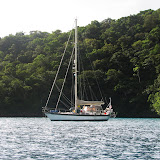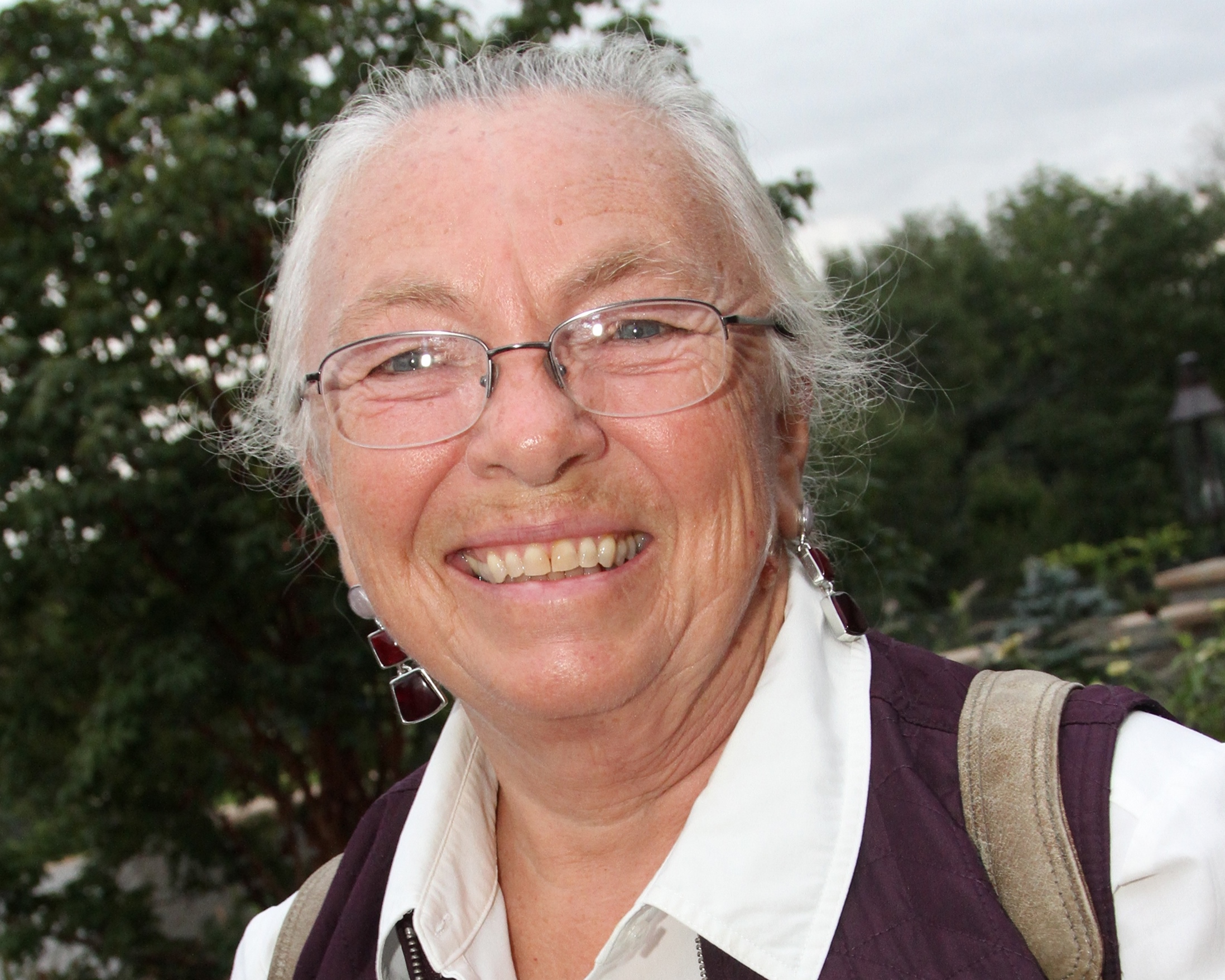Day 63, Year 2: A Second Day in Fairyland
Date: Tuesday, June 26, 2007
Weather: More of the Same . . . Sunny Day with Periods of Misty Rain
Location: Bay of Islands, Vanua Balavu, Northern Lau Group
First, I must apologize to the Bay of Islands. In yesterday’s log I said that there didn’t appear to be good snorkeling here. All of that “rock” I thought I saw during yesterday’s dinghy ride is really coral and the snorkeling is especially nice along the shore line. There are all kinds of small, colorful fish, so I definitely stand corrected. The coral is spread out and certainly not as good as that around Waya Island in Korolevu Bay in Kadavu, but when we find a good colony, the fish abound and it is beautiful. This morning we saw the most beautiful Moorish Idol we have seen to date and some fairly large angel fish. Basically the rock cliffs here go straight down into the water and over time, a wall of coral has been built all around the edges. When there is not much coral, there are lots and lots of Picasso fish. This is a type of trigger fish with a white head, a beautiful blue vertical stripe dividing the head from the rest of the body, and then diagonal lines of orangish brown and blue. There was some soft coral, some fan coral, a coral that grows like a vine, some plate coral, a little brain coral, and only one little anemone. But when I found the anemone, there was a family of seven or eight rather large Dusky Anemonefish. And they were not behaving. They were not in the anemone, but out playing around. Nemo’s dad wouldn’t have been happy. The thing I like the very best about the snorkeling here is that I can jump right off the boat and less than 200 feet right behind the boat is the shore and good snorkeling. We are anchored in turquoise water that is crystal clear. The little cove right beside us has the two best coral colonies that we found today, so it takes little or no effort to find underwater beauty. There is a tiny little fish here that I call a Smuttynose. I have no idea what it is but it is slightly salmon colored with a little brown on its face and another smudge of brown just before its tail. There are literally hundreds of thousands of them hovering over, around, and down the coral wall. It is like they are encasing or protecting the coral. If anyone knows what these little guys are, please let me know. At low tide, we could swim over the top of the coral if we kept our hands on our backs and held our breath so as not to scrape our stomachs. By going over the top, we could look down into the crevices between coral and see big spotted grouper hanging out in the shadows. Another added bonus here is that the water is warmer than it was off Kadavu Island. So we could stay in the water longer. After an hour and a half, we swam back to Windbird and looked through the fish identification books trying to put names to new finds. But we find this an almost hopeless task. We can remember the shape of the fish, but not the color. Or the colors of the fish, but not the fin shape. There are so many different kinds of fish and identification is not easy for us. I know we will get better with time, but we find it frustrating not
being able to name what we see.
We didn’t get back from snorkeling until after noon, so we ate and read for a bit, and then took the dinghy on another explore through the little islands here. I was driving the dinghy today and Mark was taking pictures. We wove in and out of little passages between islands so close together that you can almost touch both sides as you go through. We scouted for other good snorkeling areas, now that we know what to look for, and we returned to the island of thousands of bats. They were there and Mark took his turn at trying to get some good pictures. We got back to Windbird just as another rain shower blew through, so it was perfect timing. We are still thinking that we will leave here tomorrow afternoon and go around to the north side of the island, but not before another morning of snorkeling and exploring. If the north side of the island is even more beautiful, we will stay there until we leave for Savusavu, but if not, we will definitely come back here and spend everyday snorkeling and exploring the islands by dinghy.
I got an email from my sister-in-law, Sue, and she was talking about eating fresh strawberries in Maine. It made my mouth water to think of strawberries. I love them so. She said she was trying to make me jealous but that she was sure we have plenty of fruit. Actually, that is not the case. When we were in Suva, we had plenty of fruit, but the only thing we have gotten since were the oranges the chief in Moala gave us. We haven’t seen a ripe banana since we left Suva. There are bananas, papaya, and lots of lemons and oranges, but for the most part, there is only enough to support the people in the villages. And even if we found ripe fruit, we could never pick it. Every fruit tree and every coconut tree here belongs to someone, so you have to wait to be offered something. Just wanted you to know that there is not an abundance of free food out here. We sure hope the market in Savusavu is like the one in Suva with lots of fresh fruit and veggies. After a month, we will be ready.
Another thing I find interesting out here is the way we have to dress. Last year, we started out in bathing suits in the Caribbean, by the time we got to Samoa, I had to start wearing capri pants over the knee. Mark could still wear shorts, but they needed to be almost to the knee, not shorter. We could still wear bathing suits when in the water as long as we were not near a village. In Fiji, things are a little different. Pants of any sort for women are never to be worn in a village. Lako in Daliconi explained to me that a Fijian woman can wear pants or shorts in her own home, but the minute she steps out the door, she must have on a long skirt. A woman can wear long pants or capris if walking outside of a village, but must put on a sula when entering the village. Women are also expected to wear shirts with sleeves. No tank tops here. So I have started wearing sulas. This is just a piece of material wrapped around as a skirt. I’m learning to climb in and out of the dinghy in a sula with some amount of grace, and find that trekking into the hinterlands in a skirt really isn’t all that bad. Mark is expected to wear long pants when visiting in a village, or he can wear a sula as well. Shorts here for men are always longish–right above or below the knee. I see men in the villages wearing shorts, but I have never seen a man without a shirt on here. It is just not done. Most men wear sulas and t-shirts, or dress shirts for church. So hot as it is, clothes are “in” here in Fiji.
 |
| 070626 Day 63 Vanua Balavu Island, Fiji–Another Day in the Bay of Islands |



Well, catching up on the journal. this was my 40th and good to hear you folks doing well. As far as the clothing item. Blame the protestents and the British for most of that. Though there some evidence that some island nations did have customs for being fully clothed most of that arrived with the missonaries and the british. It is interesting how “customs” change and people don’t really notice it unless you where part of or in some way connect to the older “custom”.
It can be seen in many places.
But enough of sociology, enjoy th diving and keep in good shape.
Coral reefs = reason we are looking at steel hull sailboats (have kids that will be sailing with us when all finishes coming together).